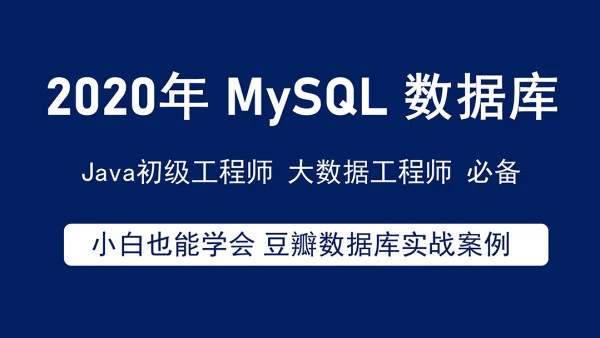本文主要给大家介绍SuSE11如何通过单实例二进制安装MySQL5.6.41,文章内容都是笔者用心摘选和编辑的,具有一定的针对性,对大家的参考意义还是比较大的,下面跟笔者一起了解下SuSE11如何通过单实例二进制安装MySQL5.6.41吧。
一、环境准备
操作系统:SuSE版本11sp3,64位
kingtry:~ # uname -a Linux kingtry 3.0.76-0.11-default #1 SMP Fri Jun 14 08:21:43 UTC 2013 (ccab990) x86_64 x86_64 x86_64 GNU/Linux kingtry:~ # cat /etc/SuSE-release SUSE Linux Enterprise Server 11 (x86_64) VERSION = 11 PATCHLEVEL = 3
二、依赖包
tack-5.6-90.55.x86_64.rpm
ncurses-devel-5.6-90.55.x86_64.rpm
安装好上面两个依赖包之后,创建连接文件:
kingtry:~ # ln -s /usr/lib64/libncurses.so /usr/lib64/libtinfo.so.5
注:如果上面连接文件没有创建,则客户端连接mysql服务的时候会报如下异常信息:
error while loading shared libraries: libtinfo.so.5: cannot open shared object file: No such file or directory
三、软件准备
mysql-5.6.41-linux-glibc2.12-x86_64.tar.gz
四、安装过程
1、创建群组及用户
kingtry:~ # groupadd mysql kingtry:~ # useradd -g mysql mysql

2、创建相关目录
kingtry:~ # mkdir -p /data/mysql/{data,tmp} #创建存放数据文件目录,data与tmp之间不能为空格 kingtry:~ # chown -R mysql.mysql /data/mysql3、解压文件,并修改解压后的文件夹的名称
kingtry:~ # tar -xf mysql-5.6.41-linux-glibc2.12-x86_64.tar.gz kingtry:~ # mv mysql-5.6.41-linux-glibc2.12-x86_64 mysql-5.6.41
4、配置环境变量
kingtry:~ # echo 'PATH=/root/mysql-5.6.41/bin:$PATH' >> /etc/profile kingtry:~ # source /etc/profile
5、初始化数据库
kingtry:~ # ./mysql-5.6.41/scripts/mysql_install_db --basedir=/root/mysql-5.6.41 --datadir=/data/mysql/data --user=mysql
五、创建配置文件/data/mysql/my.cnf
my.cnf内容参考如下:
# For advice on how to change settings please see # http://dev.mysql.com/doc/refman/5.7/en/server-configuration-defaults.html [client] #password = your_password port = 3306 socket = /data/mysql/mysql.sock default-character-set=utf8 # Here follows entries for some specific programs # The MySQL server [mysqld] port = 3306 datadir = /data/mysql/data tmpdir = /data/mysql/tmp socket = /data/mysql/mysql.sock character-set-server = utf8 collation-server = utf8_general_ci pid-file = /data/mysql/mysql.pid user = mysql explicit_defaults_for_timestamp lower_case_table_names = 1 max_connections = 1000 back_log = 1024 open_files_limit = 10240 table_open_cache = 5120 #bind-address = 127.0.0.1 #skip-name-resolve skip-external-locking local-infile = 1 key_buffer_size = 32M max_allowed_packet = 1M table_open_cache = 64 sort_buffer_size = 512K net_buffer_length = 8K read_buffer_size = 256K read_rnd_buffer_size = 512K myisam_sort_buffer_size = 8M # Don't listen on a TCP/IP port at all. This can be a security enhancement, # if all processes that need to connect to mysqld run on the same host. # All interaction with mysqld must be made via Unix sockets or named pipes. # Note that using this option without enabling named pipes on Windows # (via the "enable-named-pipe" option) will render mysqld useless! # #skip-networking # Replication Master Server (default) # binary logging is required for replication log-bin = /data/mysql/mysql-bin # binary logging format - mixed recommended binlog_format = mixed # required unique id between 1 and 2^32 - 1 # defaults to 1 if master-host is not set # but will not function as a master if omitted server-id = 1 # Replication Slave (comment out master section to use this) # # To configure this host as a replication slave, you can choose between # two methods : # # 1) Use the CHANGE MASTER TO command (fully described in our manual) - # the syntax is: # # CHANGE MASTER TO MASTER_HOST=<host>, MASTER_PORT=<port>, # MASTER_USER=<user>, MASTER_PASSWORD=<password> ; # # where you replace <host>, <user>, <password> by quoted strings and # <port> by the master's port number (3306 by default). # # Example: # # CHANGE MASTER TO MASTER_HOST='125.564.12.1', MASTER_PORT=3306, # MASTER_USER='joe', MASTER_PASSWORD='secret'; # # OR # # 2) Set the variables below. However, in case you choose this method, then # start replication for the first time (even unsuccessfully, for example # if you mistyped the password in master-password and the slave fails to # connect), the slave will create a master.info file, and any later # change in this file to the variables' values below will be ignored and # overridden by the content of the master.info file, unless you shutdown # the slave server, delete master.info and restart the slaver server. # For that reason, you may want to leave the lines below untouched # (commented) and instead use CHANGE MASTER TO (see above) # # required unique id between 2 and 2^32 - 1 # (and different from the master) # defaults to 2 if master-host is set # but will not function as a slave if omitted #server-id = 2 # # The replication master for this slave - required #master-host = <hostname> # # The username the slave will use for authentication when connecting # to the master - required #master-user = <username> # # The password the slave will authenticate with when connecting to # the master - required #master-password = <password> # # The port the master is listening on. # optional - defaults to 3306 #master-port = <port> # # binary logging - not required for slaves, but recommended #log-bin=mysql-bin # Uncomment the following if you are using InnoDB tables #innodb_data_home_dir = /var/lib/mysql innodb_data_file_path = ibdata1:10M:autoextend #innodb_log_group_home_dir = /var/lib/mysql # You can set .._buffer_pool_size up to 50 - 80 % # of RAM but beware of setting memory usage too high innodb_buffer_pool_size = 256M #innodb_additional_mem_pool_size = 2M # Set .._log_file_size to 25 % of buffer pool size #innodb_log_file_size = 5M #innodb_log_buffer_size = 8M #innodb_flush_log_at_trx_commit = 1 #innodb_lock_wait_timeout = 50 innodb_buffer_pool_instances = 2 innodb_read_io_threads = 8 innodb_write_io_threads = 8 innodb_purge_threads = 1 slow_query_log = 1 long_query_time = 10 log-queries-not-using-indexes log-error = /data/mysql/mysql.err expire-logs-days = 10 [mysqldump] quick max_allowed_packet = 512M net_buffer_length = 16384 [mysql] auto-rehash # Remove the next comment character if you are not familiar with SQL #safe-updates [myisamchk] key_buffer_size = 20M sort_buffer_size = 20M read_buffer = 2M write_buffer = 2M [mysqlhotcopy] interactive-timeout
六、启动MySQL服务
kingtry:~ # mysqld_safe --defaults-file=/data/mysql/my.cnf --user=mysql &
七、安装后配置之root密码修改
默认情况下root密码为空,这在生产环境下肯定不行的。修改root密码的方式有以下两种,随便哪个都行:
1、命令方式(注:首次修改密码,修改前密码为空)
kingtry:~ # mysqladmin -u root password 'root123'
要注意如果执行以上步骤之后root密码已经不为空,如果此时想再次修改root密码,上面命令就不行了,需要用到下面的命令:
kingtry:~ # mysqladmin -u root -p password 'root1234' Enter password:
这是交互式方式修改,输入的当前密码,password参数后面跟随的是想要修改成的密码
八、客户端连接MySQL服务
kingtry:~ # mysql -uroot -p -S /data/mysql/mysql.sock
注:需要指定 -S 参数
九、防火墙允许3306端口
kingtry:~ # vi /etc/sysconfig/SuSEfirewall2
在FW_SERVICES_EXT_TCP增加3306端口,如果存在其他端口,则空格隔开,如:
FW_SERVICES_EXT_TCP="21 22 3306"
重启防火墙:
# rcSuSEfirewall2 restart
十、设置远程访问
先登陆mysql云服务器,授权root用户可以远程登陆
mysql> grant all PRIVILEGES on *.* to root@'%' identified by 'root123'; Query OK, 0 rows affected (0.00 sec) mysql> flush privileges; Query OK, 0 rows affected (0.00 sec) mysql>
注:生产环境最好只允许root在特定IP的机器上才能远程访问。
看完以上关于SuSE11如何通过单实例二进制安装MySQL5.6.41,很多读者朋友肯定多少有一定的了解,如需获取更多的行业知识信息 ,可以持续关注我们的行业资讯栏目的。
免责声明:本站发布的内容(图片、视频和文字)以原创、转载和分享为主,文章观点不代表本网站立场,如果涉及侵权请联系站长邮箱:is@yisu.com进行举报,并提供相关证据,一经查实,将立刻删除涉嫌侵权内容。